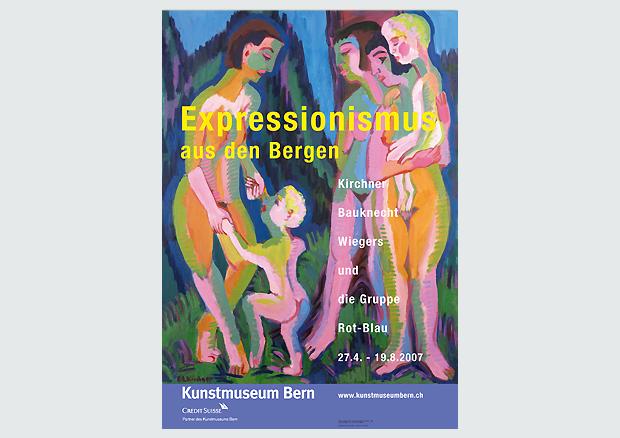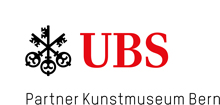Expressionism from the Mountains - Kirchner, Bauknecht, Wiegers and the Group «Rot-Blau»
Fascinating mountains and inspiring relationships
With over 160 works - paintings, wood sculptures and works on paper - the exhibition demonstrates the intense artistic and human exchange that took place between Ernst Ludwig Kirchner and a succession of younger artists during the 1920s. Approximately 55 works by Kirchner are juxtaposed with works by Philipp Bauknecht, Jan Wiegers, Albert Muller, Hermann Scherer and Paul Camenisch.
Ernst Ludwig Kirchner (1880-1938) came to Davos in 1917 for reasons of health and began to apply the expressionism he had developed in Dresden and Berlin to the depiction of the life and landscape of the Bündner mountains. In 1920, he made friends with the German Philipp Bauknecht (1884-1933), a tuberculosis patient who had been living in Davos since 1910 and who had found his way to an individual expressionistic style of painting using strong colours. In addition to their related styles, the artists were bound by a common desire to immortalise in monumental form the Alpine landscape and the life of the mountain farmers.
The Dutchman Jan Wiegers (1893-1959) also came to Davos from Groningen with a lung complaint in 1920 and became friends with Kirchner. He adapted the latter's techniques and stylistic elements and after his return home in 1921, conveyed the basics of the Kirchner style of expressionism to his friends in the artist group «De Ploeg». In several journeys to Davos in 1925 and 1926, Wiegers renewed the artistic dialogue with Kirchner and maintained friendly relations with him until Kirchner's death. In June 1923, on the occasion of his exhibition in the Kunsthalle Basel, Kirchner met the young artists from Basel Hermann Scherer (1893-1927) and Albert Müller (1897-1926). They subsequently often came to see him in Davos for extended working visits. In the interchange with Kirchner's art, Scherer and Müller found their way to their own congenial visual language. On New Year's Eve in 1924-25, together with Paul Camenisch (1893-1970), they founded the artist group «Rot-Blau», which, in its short but turbulent history, was to make the most important contribution to Swiss Expressionism. The collaboration of Kirchner with the young artists from Basel was fruitful for both parties. With Kirchner's encouragement, for instance, Scherer, a stonemason by profession, created an impressive series of wood sculptures. Conversely, Kirchner felt stimulated by Scherer's competition to increase his own sculptural activity. However, the early deaths of Müller and Scherer put an untimely end to the friendship with Kirchner.
By grouping the exhibits according to subject, the analogies and also the differences in the works of the six artists, who often worked side by side on the same motifs, are demonstrated. In addition to the landscape around Davos and the life of the mountain farmers, the nude was a central theme, particularly the depiction of nudes moving freely in the landscape of woods and streams around Kirchner's house. The artists also portrayed themselves and each other in numerous self-portraits, single and group portraits that are still witness to their personal attachment. A further subject field is the landscape of the Mendrisiotto, where the «Rot-Blau» - artists met regularly.


